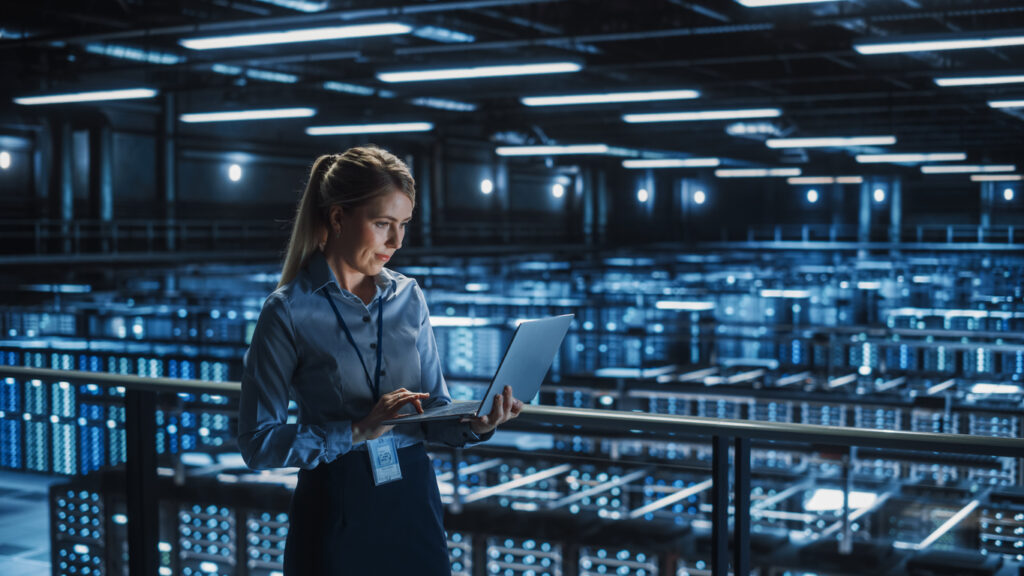
Art Clomera
Vice President, Operations
In today’s fast-paced digital landscape, cybersecurity threats are constantly evolving, making it crucial for Federal agencies to keep their defenses current. Risk Management Framework (RMF) Continuous Monitoring is a process that enables organizations to keep a watchful eye on their cybersecurity program and respond to emerging threats in a timely manner.
By continuously monitoring their systems, organizations can identify and remediate vulnerabilities before they are exploited. In this article, we will explore the importance of RMF Continuous Monitoring and provide some tips on how to keep your cybersecurity program up-to-date.
What is continuous monitoring in RMF?
In the context of the Risk Management Framework (RMF), continuous monitoring is a strategy of actively observing, assessing, and reporting on the security status of an information system or network. This is done on an ongoing basis. Continuous monitoring involves a proactive approach to security. It enables organizations to identify and respond to potential security threats in a timely and effective manner.
By implementing an RMF Information Security Continuous Monitoring (ISCM) program, organizations will be conducting continuous monitoring to better protect their information systems and networks from security threats and ensure compliance with applicable regulations and standards.
Why is a continuous monitoring strategy a vital part of a comprehensive cybersecurity program?
Traditional point-in-time security measures are no longer enough. Continuous monitoring fits into a comprehensive cybersecurity program as it enables organizations to detect and respond to potential security threats in real time. With continuous monitoring, organizations can detect unauthorized changes to the system’s configuration, identify potential security breaches, and address security incidents quickly. It also helps organizations to meet regulatory compliance requirements by providing regular reports on the security posture of their systems.
4 benefits of continuous monitoring
Continuous monitoring provides real-time visibility into system performance, security, and compliance. Organizations can identify and address issues promptly before they escalate into greater issues. It also facilitates proactive maintenance and minimizes downtime for increased productivity and cost savings.
1. Reduce ongoing compliance costs
Continuous monitoring can help organizations to reduce costs associated with manual security assessments, compliance reporting, and incident response through the automation of compliance processes. It also allows for the real-time identification of compliance issues so organizations can address those issues before they become costly compliance breaches. Other benefits include improved accuracy and streamlined reporting, which reduces the risk of breaches and fines while avoiding costs associated with manual reporting. All of these factors add up to a reduction in ongoing compliance costs.
2. Heighten risk awareness and increase value
There are a few ways continuous monitoring strategies can help organizations increase their cybersecurity risk awareness and value. It allows for an enhanced security posture which helps organizations demonstrate to key stakeholders and their customers that they take security seriously which leads to reducing their cybersecurity risk exposure. Organizations can better identify and address potential security threats, which reduces the risk of security breaches and consequential reputational damage, financial loss, and legal liabilities. Continuous monitoring drives data-driven decision-making as cybersecurity leaders have access to real-time data, which allows for more strategic decisions to be made.
3. Early threat detection and improved incident response
With continuous monitoring, organizations can detect potential security threats in real-time to respond quickly and effectively. Doing so makes it easier to contain and remediate security incidents. This factor reduces the time and costs associated with issue resolution.
4. Efficient resource utilization
Continuous monitoring enables organizations to allocate resources efficiently by identifying areas that require the most attention. That way, organizations can prioritize their resources effectively. This efficient resource utilization also improves productivity. Less time and effort are needed to manage security through automation.
5 things to consider when implementing a continuous monitoring strategy
As you begin creating your continuous monitoring plan, there are several things to keep in mind. We share our top five considerations below.
Does your continuous monitoring strategy fit your existing budget?
As you build your continuous monitoring strategy, consider how it fits into your existing budget. You can reduce costs by causing automation such as data collection, analysis, and reporting. Doing so will reduce the workload and costs associated with continuous monitoring. It’s also important to plan for scalability by selecting tools and solutions that can grow with the organization’s needs. This can help to avoid costly upgrades or migrations down the road.
Can you satisfy all the requirements for compliance?
Meeting all the requirements for compliance is essential when considering your RMF continuous monitoring template. There are some key ways continuous monitoring can help organizations meet these requirements, including:
- Detecting security incidents in near real-time, allowing for a quick response and the prevention of potential compliance violations
- Ongoing risk assessment to identify compliance risks and take appropriate action to prioritize and mitigate them
- Creation of an audit trail of security events, which can help organizations demonstrate compliance with regulatory requirements
Are you prepared to implement a continuous monitoring strategy?
To start, identify key assets (such as data, systems, and applications) and prioritize them for monitoring to better allocate your resources. Next, define objectives, including the types of risk you want to detect, how frequently you will monitor, and metrics to measure. Then, set up policies and procedures to implement your strategy. These should include guidelines for data access, data retention, incident response, and reporting.
Have You Selected the Appropriate Tools?
Consider the type of data you want to monitor, the volume of data, and the level of analysis required. Make sure the tools are designed to meet your agency’s specific requirements; harmonize cybersecurity across your enterprise and user experience; and empower your workforce (e.g. Citizen Developers). On this note, the workforce should be trained on how to use selected tools, leverage data as a center of gravity, and respond effectively to data-driven decisions. Ideally, the tool you select will have an intuitive user interface to make onboarding seamless.
Are you set up to monitor performance?
After implementing a continuous monitoring plan, it’s critical to consider how you’ll monitor the performance of the strategy. What metrics will you use to determine if the plan is meeting its targets? Make plans to measure output, the effectiveness of tools, data accuracy, and reporting quality. That way, you can determine if the strategy is meeting the original goals and can adjust/customize as needed.
Automate your continuous monitoring strategy with IPKeys Technologies
Advanced Analytics
IPKeys Cyber-Lab-as-a-Service (CLaaS)® is a comprehensive business intelligence reporting and analytics platform that leverages AI to provide unified cybersecurity monitoring. It enables continuous monitoring of all cybersecurity information within environments and presents it in a consumable and actionable format that aligns with critical compliance requirements.
With its intuitive toolset, IPKeys CLaaS® empowers users to make informed cybersecurity decisions and provides interactive analytics for creating customized data stories and visual reports that facilitate fast and accurate decision-making. Using existing commercial technology, it incorporates a proprietary correlation engine that integrates cyber monitoring, alerting, and compliance into a single tool.
Industry Driven, Federal Agency Optimized
To ensure cybersecurity within the DOD, military and civilian personnel must follow NIST SP 800 series and RMF processes for Authorization to Operate (ATO) and continuously monitor assets on the DODIN. These requirements can be burdensome, time-consuming, and expensive without enterprise cybersecurity capabilities and automation.
The IPKeys CLaaS® was developed in collaboration with DISA and is optimized for cybersecurity and compliance professionals in the DOD. This tool provides interactive business intelligence to support critical risk decisions, specifically for Program Executive Officers and Authorization Officers in cyberspace operations for Information Systems and Cloud Service Provider Offerings.
High-Performance
IPKeys CLaaS® offers near real-time visualization of RMF scan data in a quick and efficient manner. It operates within computer memory, meeting enterprise performance expectations. Instead of having to sift through multiple data sources and tools like SIEMs, spreadsheets, PowerPoints, and documents, users can customize the tool to view information in a way that is preferable to them.
This capability automates the visualization of risk management framework (RMF) cybersecurity data and processes, providing near real-time insights. It also correlates this information with GRC requirements, simplifying the process of maintaining both cybersecurity and compliance.
User-Friendly and Flexible
CLaaS delivers nine standardized dashboards to deliver a depth and breadth of critical cybersecurity information. This intuitive, user-friendly interface is infinitely configurable and flexible. Users can uncover hidden connections between different types of data, such as the relationship between ransomware attacks and Microsoft patches. This solution offers a powerful, modern, and user-friendly web-based interface that allows users to drill down into ever deeper levels of detail across the enterprise.
Contact Us
At IPKeys, our focus is on supporting the Federal Governments’ cyber mission with top-notch technology and services. If you have any questions, want to check out a demo, or learn more about our solutions, be sure to reach out to us today.
FAQs about continuous monitoring
What is an example of continuous monitoring?
An example of continuous monitoring is the implementation of an ISCM program for federal information systems and organizations, as outlined in NIST SP 800-137. This program aims to provide visibility into organizational assets, awareness of threats and vulnerabilities, and insight into the effectiveness of security controls. It helps organizations maintain ongoing assurance that planned and implemented security controls align with their risk tolerance and provides the necessary information to respond to risks in a timely manner.
Which tool is used for continuous monitoring?
CLaaS® is a continuous monitoring tool designed for federal agencies. It automates the collection, analysis, visualization, and reporting of cybersecurity and compliance data. Instead of working with multiple disparate systems, cybersecurity leaders can view all related data and processes in one unified platform.
How do you implement continuous monitoring?
Start by defining your monitoring objectives and scope. Then, select appropriate tools and technologies, establish monitoring policies and procedures, and implement your monitoring solution. Be sure to regularly analyze and report on your monitoring data. This requires careful planning, ongoing maintenance, and improvement, as well as a commitment to staying up-to-date with the latest threats and vulnerabilities.
How does continuous monitoring help to deter cyber attacks?
Continuous monitoring provides early detection, real-time threat intelligence, enhanced visibility, and rapid response capabilities. As a result, organizations can proactively defend against cyber threats and minimize their impact.



